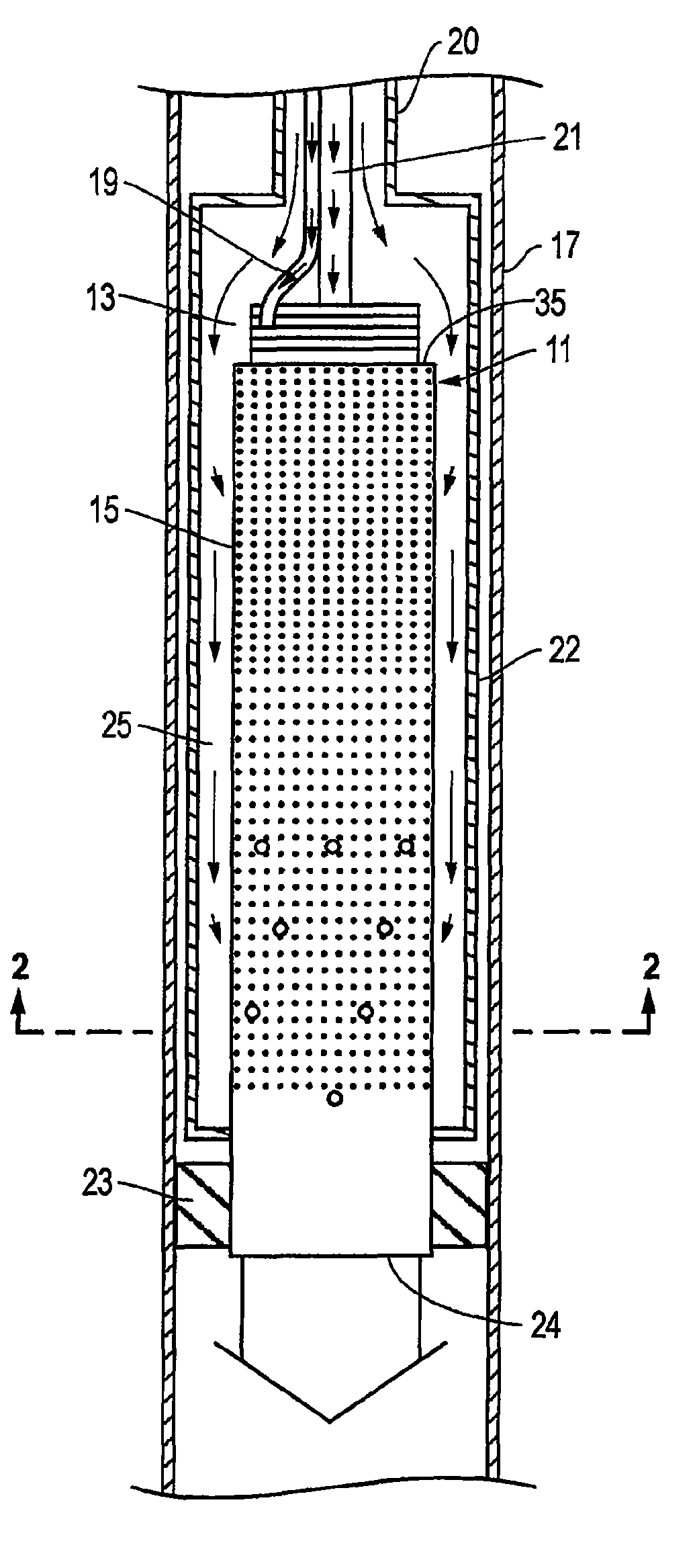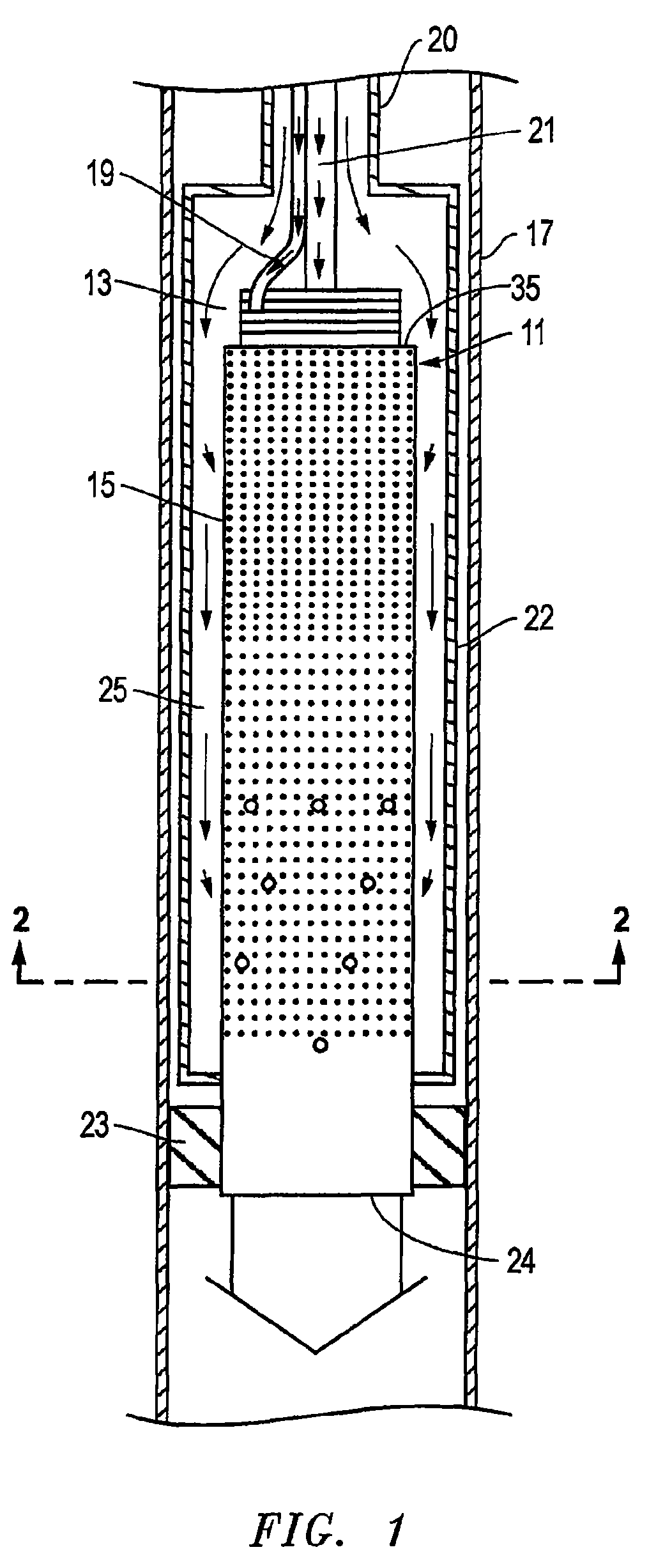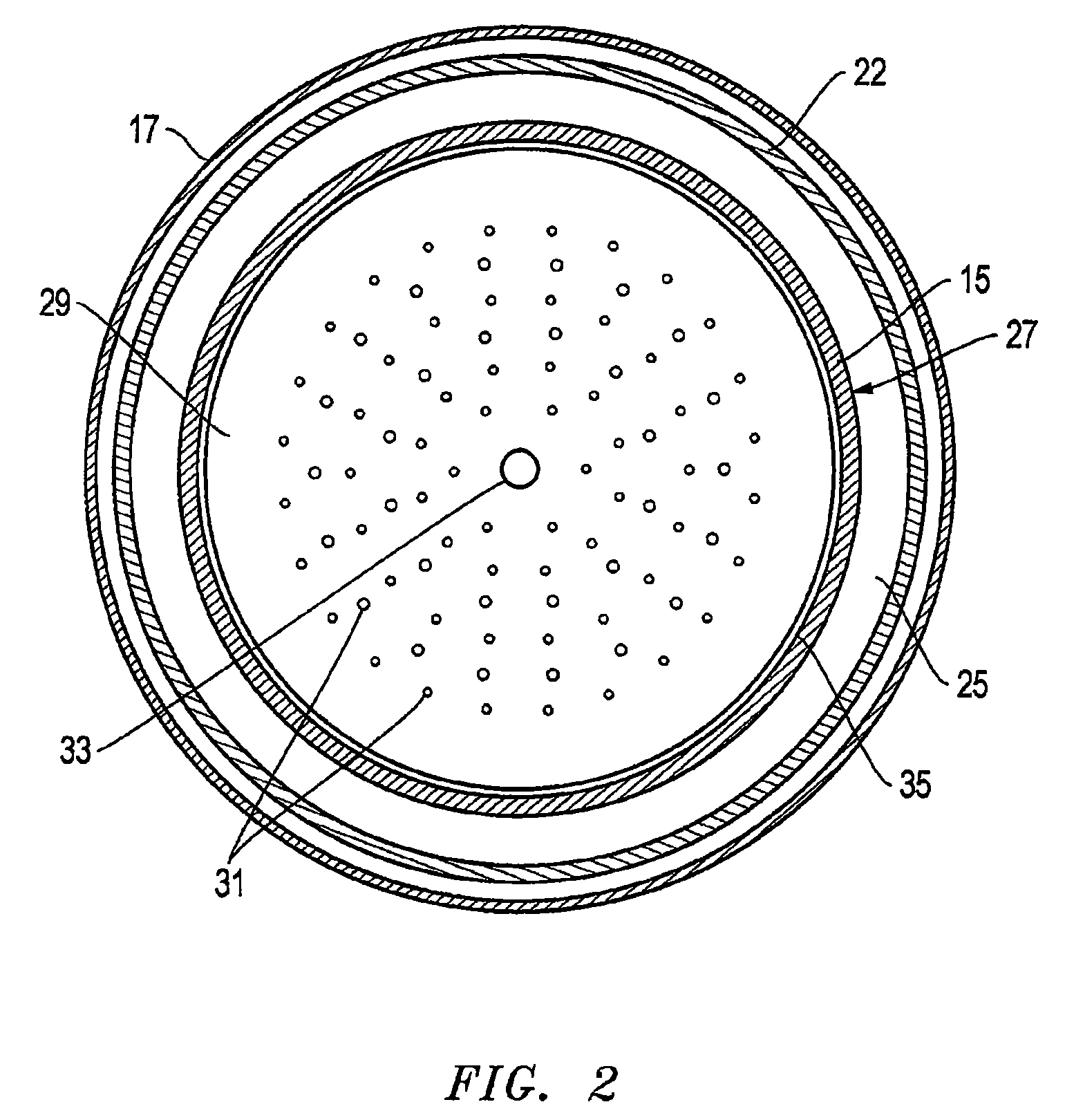Process for dispersing nanocatalysts into petroleum-bearing formations
a technology of nanocatalysts and petroleum-bearing formations, which is applied in the direction of fluid removal, insulation, borehole/well accessories, etc., can solve the problems of large coke formation, sharp reduction of the value of oil to refiners, and difficult and expensive reprocessing of resources into saleable products, etc., to reduce the viscosity of heavy crude oil, reduce the viscosity, and reduce the impurities of sulfur
- Summary
- Abstract
- Description
- Claims
- Application Information
AI Technical Summary
Benefits of technology
Problems solved by technology
Method used
Image
Examples
Embodiment Construction
[0035]Although the following detailed description contains many specific details for purposes of illustration, anyone of ordinary skill in the art will appreciate that many variations and alterations to the following details are within the scope of the invention. Accordingly, the exemplary embodiments of the invention described below are set forth without any loss of generality to, and without imposing limitations thereon, the present invention.
[0036]FIG. 1 depicts a downhole burner 11 positioned in a well according to an embodiment of the invention. The well may contain various wellbore configurations including, for example, vertical, horizontal, SAGD, or various combinations thereof. One skilled in the art will recognize that the burner also functions as a heater for heating the fluids entering the formation. A casing 17 and a packer 23 are shown in cross-section taken along the longitudinal axis of casing 17. Downhole burner 11 includes an injector 13 and a cooling liner 15 conta...
PUM
 Login to View More
Login to View More Abstract
Description
Claims
Application Information
 Login to View More
Login to View More - R&D
- Intellectual Property
- Life Sciences
- Materials
- Tech Scout
- Unparalleled Data Quality
- Higher Quality Content
- 60% Fewer Hallucinations
Browse by: Latest US Patents, China's latest patents, Technical Efficacy Thesaurus, Application Domain, Technology Topic, Popular Technical Reports.
© 2025 PatSnap. All rights reserved.Legal|Privacy policy|Modern Slavery Act Transparency Statement|Sitemap|About US| Contact US: help@patsnap.com



